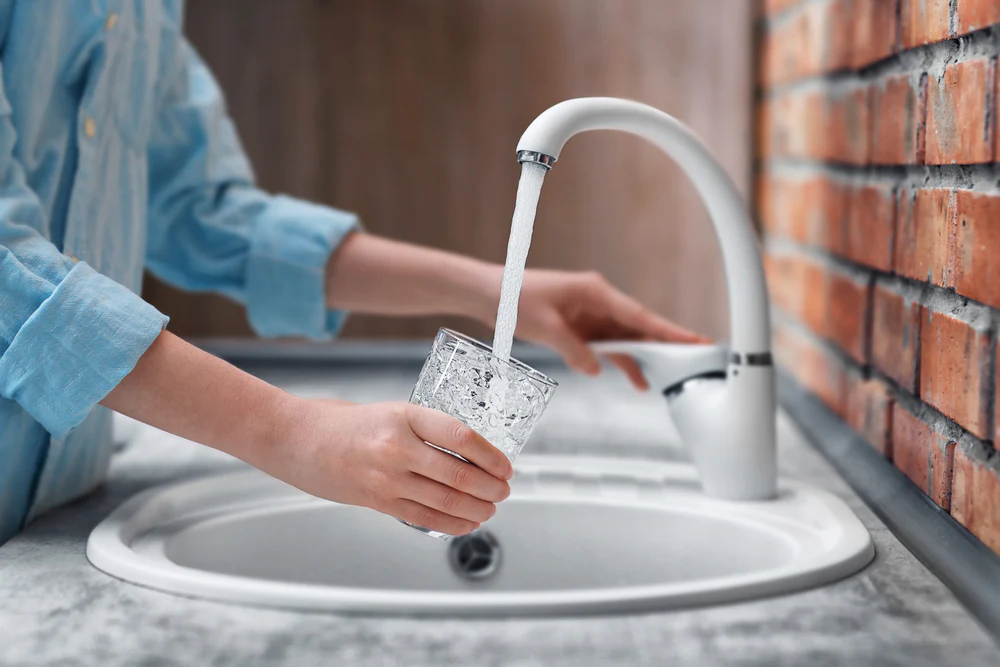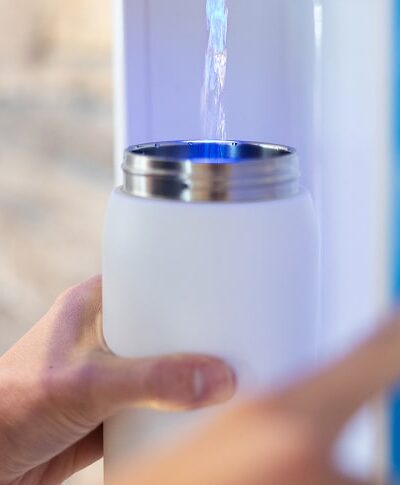The convenience of plastic water bottles has been the leading reason why people continue to use them in their day-to-day life. Although many industries are starting to offer eco-friendly alternatives such as aluminum water bottles, waste from single-use plastic water bottles is still a problem around the world. Furthermore, there may be an aspect of convenience, but at what cost?
The chemicals found in plastic water bottles can be as harmful as those found in an originating water source. The most common chemical is BPA. Although many companies have moved away from using BPA, bottled water still poses a concern due to its varying water treatment options. Fortunately, there are alternatives available, which a majority of consumers are relying on to fulfill their hydration needs conveniently and chemical-free.
BPA
BPA stands for bisphenol-A. It’s an industrial chemical used to make certain plastics, including single-use plastic water bottles. The epoxy resins where BPA is found are used to coat bottle tops, water supply lines, and food cans. BPA can then seep into the beverages (or food) from containers that use BPA. Although the U.S. Food and Drug Administration (FDA) has commented that BPA is safe at very low levels, there are health effects with prolonged or excessive BPA exposure.1
BPA may have adverse health effects on the brain and prostate gland of fetuses, infants, and children. It can also affect children’s behavior and may be a link to increased blood pressure, type 2 diabetes, and cardiovascular disease in adults. Furthermore, new research shows BPA levels may decline initially after consumption, but stick around for longer than previously expected, potentially making it more harmful.2
Rather than only being concerned about excessive consumption of water from plastic bottles, the concern is of accumulation of BPA in the body over time. Additionally, when plastic water bottles have been sitting in the sun, it exacerbates the problem by allowing BPA chemicals to leach into the water. For this reason, it’s a good idea to use a steel refillable water bottle and fill it up with a water dispenser for home. It’s important to check the labels of any plastic container to see if they are BPA-free.
Many people aren’t aware of just how many chemicals are found in their water bottles and are under the false assumption that what they’re drinking is a healthy alternative to drinking from the tap. When, in fact, many bottled water distributors source their water supply from the same source as tap water. Many popular bottled brands simply enhance it in some way.3 So, it’s not only about what chemicals are in plastic water bottles, but what other contaminants are in the water itself.
Cryptosporidium
The U.S. Environmental Protection Agency (EPA) discusses how the quality of bottled water depends on if and how the water is treated. Although tap and bottled water go through certain filtration methods, the level of contaminants remaining varies from source to source. As with tap water, the EPA sets standards for bottled water, and people with immunocompromised systems may still be affected by the type and level of contaminants found in bottled water.
In addition to chemicals in plastic water bottles, the EPA cautions against exposure to Cryptosporidium specifically. Though not a chemical, it’s still a harmful contaminant that can be found in plastic water bottles. Cryptosporidium is a microscopic parasite found in most surface water sources, such as lakes, rivers, and streams, and can cause severe illness in humans.
Boiling water for a full minute can help kill off these parasites. But, the more convenient option is to use point-of-use filters. The U.S. Food and Drug Administration (FDA) says reverse osmosis, distillation, filtration with an absolute one micron filter, and/or ultraviolet light are effective water treatments to protect against Cryptosporidium.4
Since not all bottled water is created equally, it’s imperative to read the label regarding where the water is sourced from and what water treatment method is used.
How to Avoid Chemicals and Reduce Plastic Waste?
Both the water itself and the plastic it’s in can cause health effects due to the contaminants and chemicals found in plastic water bottles. In addition to health concerns, consumers are becoming increasingly concerned about the effect of plastic waste on the environment. The convenience aspect that once motivated people to drink disposable water bottles has now subsided dramatically with a need for alternative solutions.
Today’s consumer is focused on finding products that are safe and sustainable. They are willing to pay more for products that are chemical-free as well as eco-friendly. In fact, an estimated 73% of consumers are likely to make a purchase based on whether there would be a reduced environmental impact, and 41% are willing to pay more for all-natural and organic goods.4
Furthermore, people want access to fresh, clean water without the concern of ingesting plastic particles or contributing to plastic waste. As a result, businesses across all industries are taking action by sourcing water solutions in other ways. Airports, hotels, and gyms are starting to offer alternative water sources, such as offering water bottles made out of recyclable materials, like aluminum. School administrators are becoming more interested in learning how to improve sustainability in schools by limiting plastic water bottle use. Others are introducing the use of purified water stations as their solution for the future.
Additionally, due to enhanced cleaning and sanitization protocols due to Covid-19, businesses want a drinking water solution that can serve everyone in a safe way. To meet the needs of the modern consumer, the FloWater Touchless Water Dispenser now has a foot pedal that allows for a touchless fill-up experience. Plus, the recessed dispense nozzle fits any size of container without making direct contact.
Fast auto-replenishment and rapid dispensing allow consumers to quickly fill their reusable water bottle on the go with water chilled to the optimal drinking temperature every time. It keeps people hydrated without the addition of plastic waste accumulating in the environment. Plus, it helps mitigate the chance of exposure to the harmful effects of plastic water bottles.
FloWater’s Purification System Offers a Chemical-Free Solution
FloWater Refill Stations are beginning to replace outdated drinking water fountains and single-use bottled water from vending machines as a way to cut back on plastic and provide a purified water solution. By passing tap water through seven advanced filtration steps to purify, improve, and add to the taste of its final product, consumers get clean, delicious, chilled water at their disposal.
The first three filters transform tap water with treatment methods already recommended by the EPA to remove contaminants, chemicals, and pollutants. The water goes through the Sediment, Carbon, and Advanced Osmosis filters.
- Sediment – Sedimentation is part of the process a city’s municipality uses to treat tap water. In this first stage of the FloWater process, the filter sets the entire purification process in motion by removing dirt, dust, and suspended solids from the water.
- Carbon – In the second phase, a carbon filter removes smaller particles, including heavy metals, chlorine, and radon, among other harmful contaminants. It also captures and removes odors from the water to deliver a pure product.
- Advanced Osmosis – By using semipermeable membranes, the water is then filtered through the advanced osmosis system and removes bacteria, viruses, dissolved solids, and other minuscule contaminants. This filter is five times more efficient than standard reverse osmosis systems or anything else on the market.
Furthermore, FloWater doesn’t just remove the bad from tap water. It adds back in the good.
Improving the Way We Drink Water
Adding back minerals and electrolytes naturally found in the water after contaminants and chemicals have been removed enhances the quality of water. After tap water goes through the first three phases of the FloWater purification process, it enters the next phase of improving the water in three additional steps.
- Activated Oxygen – Not only does activated oxygen serve as a natural sanitization for the tanks and internal system, but it also increases oxygen in the water that’s available for your blood and muscles. Plus, it helps improve the water’s taste.
- Alkaline – Adjusting the pH levels of tap water through a proprietary blend of 10 trace minerals helps to neutralize acidity in the body caused by a variety of daily factors, such as diet and stress. It also alleviates some of the stress put on your internal organs, resulting in a healthier drinking water experience.
- Electrolytes – The water then goes through an electrolyte enhancement as potassium, magnesium, sodium, and calcium are added back to the water to help support healthy body functions, such as cell repair and immune defense. Electrolyte-enhanced water helps the body stay hydrated and energized.
Finally, the last stage of the advanced purification process is the coconut carbon filter which naturally enhances the taste to deliver water that tastes crisp and perfectly clean.
In addition to the thorough water treatment process, FloWater eliminates the need for plastic water bottles. Through both the FloWater Touchless Water Dispenser and the on-the-go aluminum bottles, there’s no need for plastic waste when it comes to delivering fresh, great-tasting water to guests. Less plastic means fewer chemicals. Fewer chemicals mean greater health protection.
Guests are becoming more conscious of what they put in their bodies. Guests want the same convenience plastic water bottles once delivered but in a way that’s healthy and doesn’t include being exposed to harmful chemicals and contaminants. FloWater provides a solution that will forever improve the way we drink water and allow businesses to better accommodate their guests.
Sources:
- Mayo Clinic. What is BPA, and what are the concerns about BPA? https://www.mayoclinic.org/healthy-lifestyle/nutrition-and-healthy-eating/expert-answers/bpa/faq-20058331#:
- Scientific American. Like a Guest That Won’t Leave, BPA Lingers in the Human Body. https://www.scientificamerican.com/article/bpa-lingers-in-human-body/
- Minnesota Department of Health. Bottled Water: Questions and Answers. https://www.businessinsider.com/animated-map-bottled-water-springs-dasani-aquafina-2016-10
- Entrepreneur. Everyday Natural and Organic Products in Continued High Demand. https://www.entrepreneur.com/article/364946
- U.S. Environmental Protection Agency. Water Series: Bottled Water Basics. https://www.epa.gov/sites/default/files/2015-11/documents/2005_09_14_faq_fs_healthseries_bottledwater.pdf





